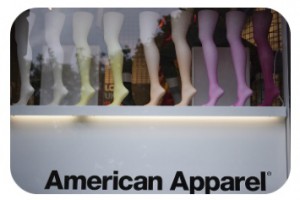 For years American Apparel seemed poised to become the next big fashion brand. Their simple but bold cotton clothing and suggestive advertisements catapulted the company to a $1 billion valuation in 2007. A decade later, however, American Apparel filed for bankruptcy and sold its assets to a Canadian firm for just $88 million. Along with shuttering its 110 stores, the company also lost its famed garment factory in Los Angeles.
For years American Apparel seemed poised to become the next big fashion brand. Their simple but bold cotton clothing and suggestive advertisements catapulted the company to a $1 billion valuation in 2007. A decade later, however, American Apparel filed for bankruptcy and sold its assets to a Canadian firm for just $88 million. Along with shuttering its 110 stores, the company also lost its famed garment factory in Los Angeles.
This production facility was one of American Apparel’s best assets during the height of its success. After all, producing their clothing in the U.S. allowed the company to emphasize the “American” part of their name in its marketing. Founder Dov Charney pushed the concept further by also focusing on how the brand produced clothing without sweatshop labor. “Made in USA – Sweatshop Free” became a common slogan in American Apparel ads. Meanwhile, Charney became the public face of the company as he boasted about its commitment to ethics.
Eventually, though, this big talk clashed with reality as allegations of sexual harassment began to mount against Charney. The board ousted him from the CEO position in 2014, but by then the damage had been done. American Apparel had already been crumbling under the weight of debts it incurred during a massive mid-2000s expansion. Then the allegations against Charney tarnished the brand’s reputation beyond repair, leading to its decline and eventual sale to Gildan Activewear earlier in January. This company mainly sells clothing to retailers like Target or K-Mart. So if Gildan decides to keep the brand alive, consumers may soon be able to find American Apparel clothing at these comparatively unfashionable outlets.
Questions:
- What is the danger for companies that heavily market themselves as ethical enterprises?
- Can the American Apparel brand be saved?
Source: Shan Li, “With Sale to Canadian Firm, American Apparel Will Be American No Longer,” Los Angeles Times, January 11, 2017. Photo by William Murphy.
